Introduction: In this article, Gena Philibert-Ortega writes about a subject near and dear to a lot of hearts around Easter time: the chocolate bunny. Gena is a genealogist and author of the book “From the Family Kitchen.”
It’s the piece-de-resistance found in the annual candy-filled, pastel-colored Easter basket. Maybe you’ve even enjoyed one on occasion. What am I referring to? The much-coveted chocolate Easter bunny! Growing up, I always wanted one of those really big chocolate rabbits that were too big for the average Easter basket. Unfortunately, or maybe fortunately from my parent’s point of view, mine tended to be much smaller.
I’m sure other kids had similar dreams. Sure, candy of any kind is nice – but chocolate is great, and there’s no better time to acquire a large quantity of it than at Easter. That’s when all types of chocolate candies are produced, ranging from the tiny chocolate eggs wrapped in colored foil, to the larger chocolate eggs decorated in colored frosting, to the ultimate chocolate likeness, the life of the party himself: the Easter Bunny.

Each year I buy a chocolate bunny for each of my kids and I’m not alone. More than 60 million chocolate bunnies are sold each year. (1) That’s a lot of candy!
The Birth of the Bunny
Where did this tradition of cholate bunnies at Easter come from? The chocolate bunny was born in Germany in the 19th century, and eventually it made its way to America. I found “chocolate rabbits” mentioned in American newspapers as early as 1888, and from there the tradition took flight. In 1890, American drug store owner Robert Strochecker used a five-foot-tall chocolate bunny as an Easter promotion. (2) Imagine that! Five feet of chocolate! Customers of Theo Geisel’s Woodbury, New Jersey, store in 1907 could – because they were given the opportunity to win a five-pound chocolate bunny with a 25-cent purchase.
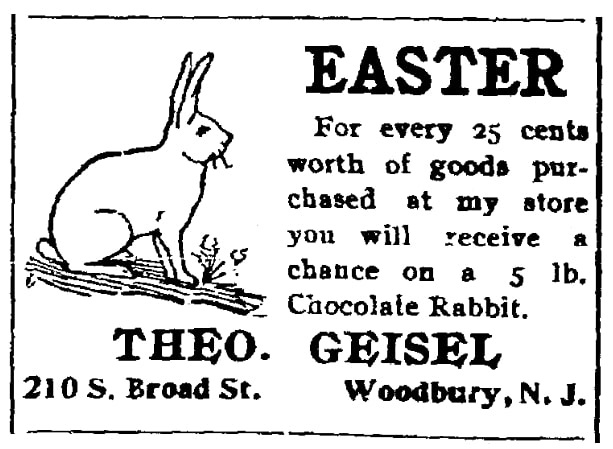
Other store owners had been using chocolate rabbits in their own Easter displays, like this one from 1896 in the window of the D. Bacon company in Harrisburg, Pennsylvania.
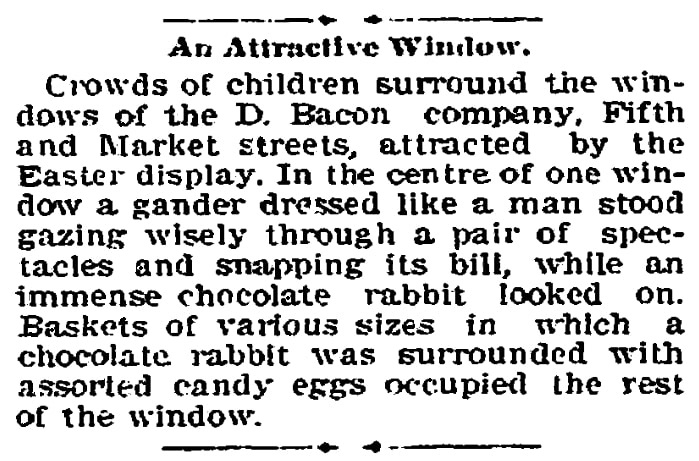
Fast forward to the 20th century, when candy manufacturers obtained molds and started producing more chocolate bunnies, which in turn meant they became very popular, according to this 1902 newspaper article.
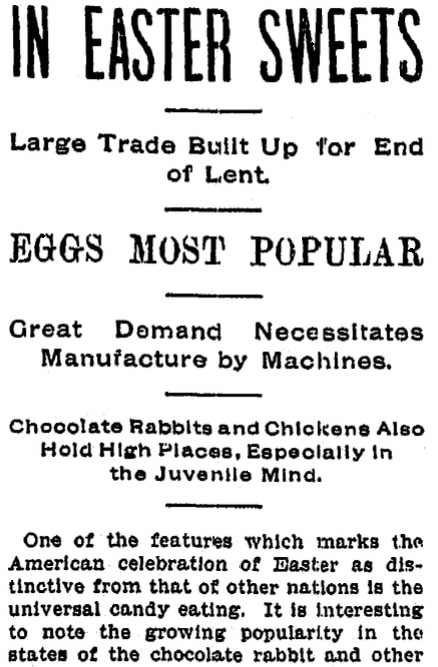
This article reports:
“Time was, and not so long since, when America imported all her Easter candy novelties from Europe – France and Germany being the chief countries from which she received her supplies.”
The article goes on the explain that hundreds of employees and large candy manufacturers now make Easter-related candy in the United States. After explaining how these manufacturers make chocolate eggs, it goes on to say that chocolate rabbits and chickens are “simply poured into the molds, where it remains until it is hard enough… and then placed on waxed paper to dry.” Once the candy is hard it is “varnished” with a coating of boiled sugar.
Since the late 19th century, the chocolate bunny has taken pride of place in the Easter basket – except during the World War II years when chocolate and sugar were rationed.
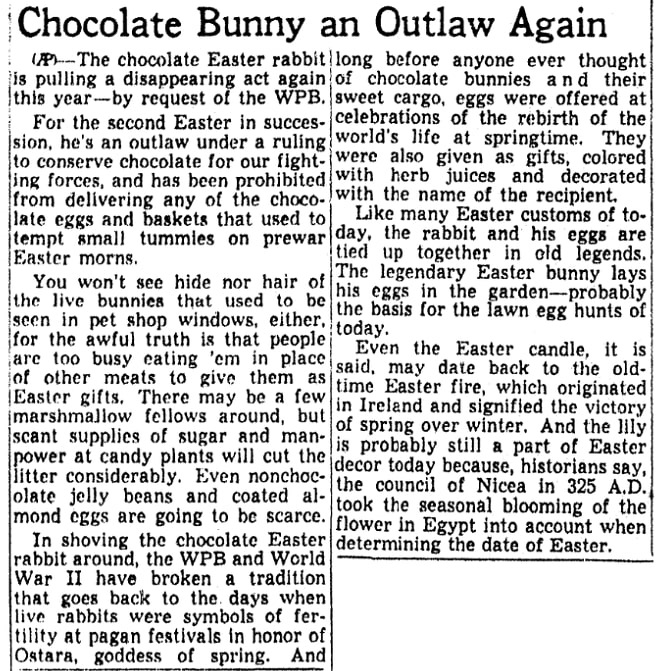
How Do You Eat Them?
So, if you are lucky enough to receive a chocolate Easter bunny this year, how will you eat it? It seems obvious that you bite off the ears and the majority of people polled agree. I’m sure there are those who may have a different way to devour their chocolate treat. I once recall a family member who would bite off the tail and put the bunny in the box so it appeared to be untouched.
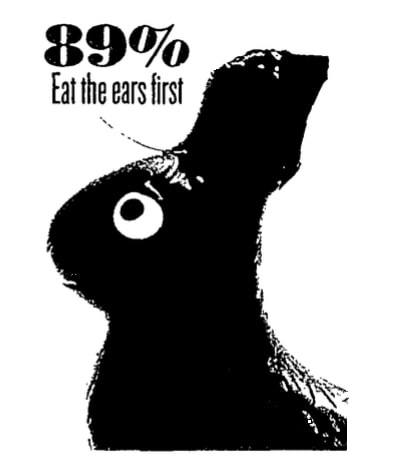
Here’s Hoping Your Easter Bunny Dreams Come True
Easter candy types are plentiful. There’s no doubt about it. You can take your pick from jelly beans, Peeps, and other goodies, just like your family living in 1928, who had their choice of chocolate eggs, seashells, hens and rabbits – as well as the “chocolate hen and rabbit riding in a fancy cart.”
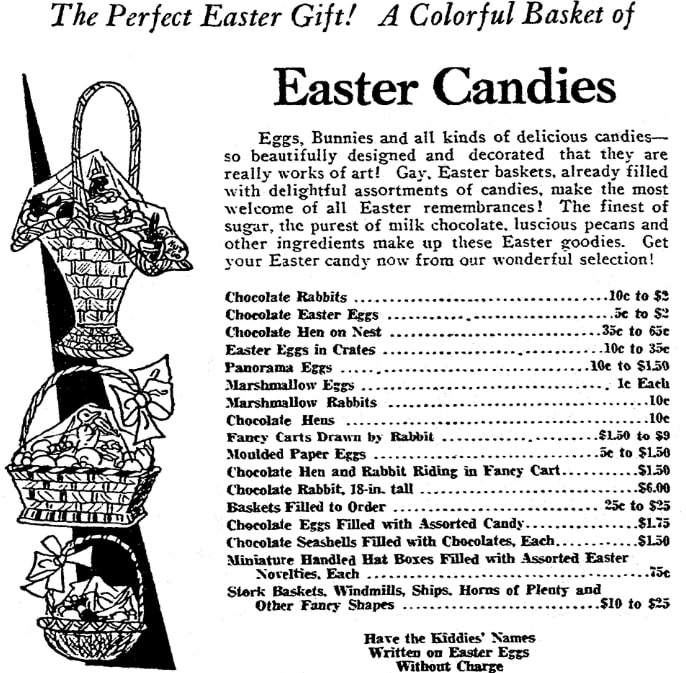
But let’s face it. Chocolate bunnies rule!
Happy Easter!
________________
(1) “A History of Chocolate Bunnies,” Foodimentary (https://foodimentary.com/2012/04/03/a-history-of-chocolate-bunnies/: accessed 12 April 2019).
(2) “A History of Chocolate Bunnies,” Foodimentary (https://foodimentary.com/2012/04/03/a-history-of-chocolate-bunnies/: accessed 12 April 2019).
